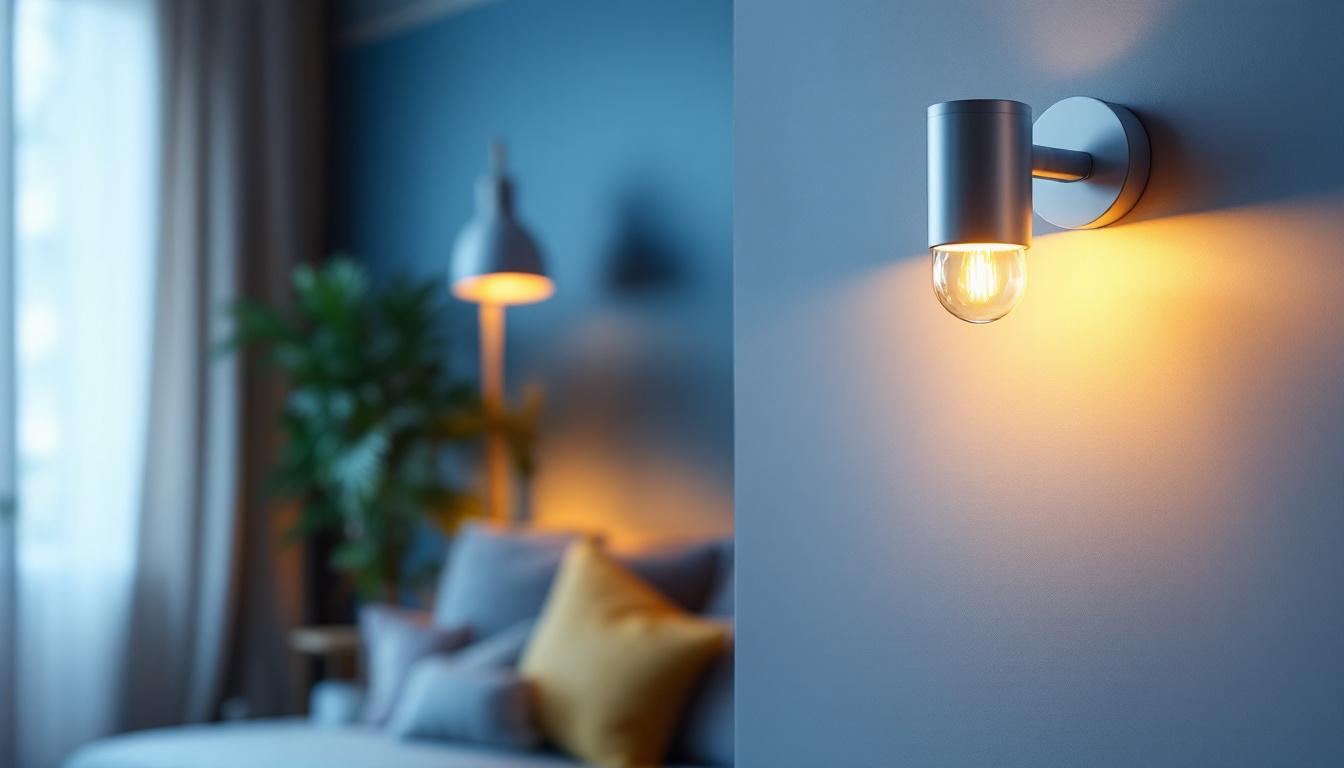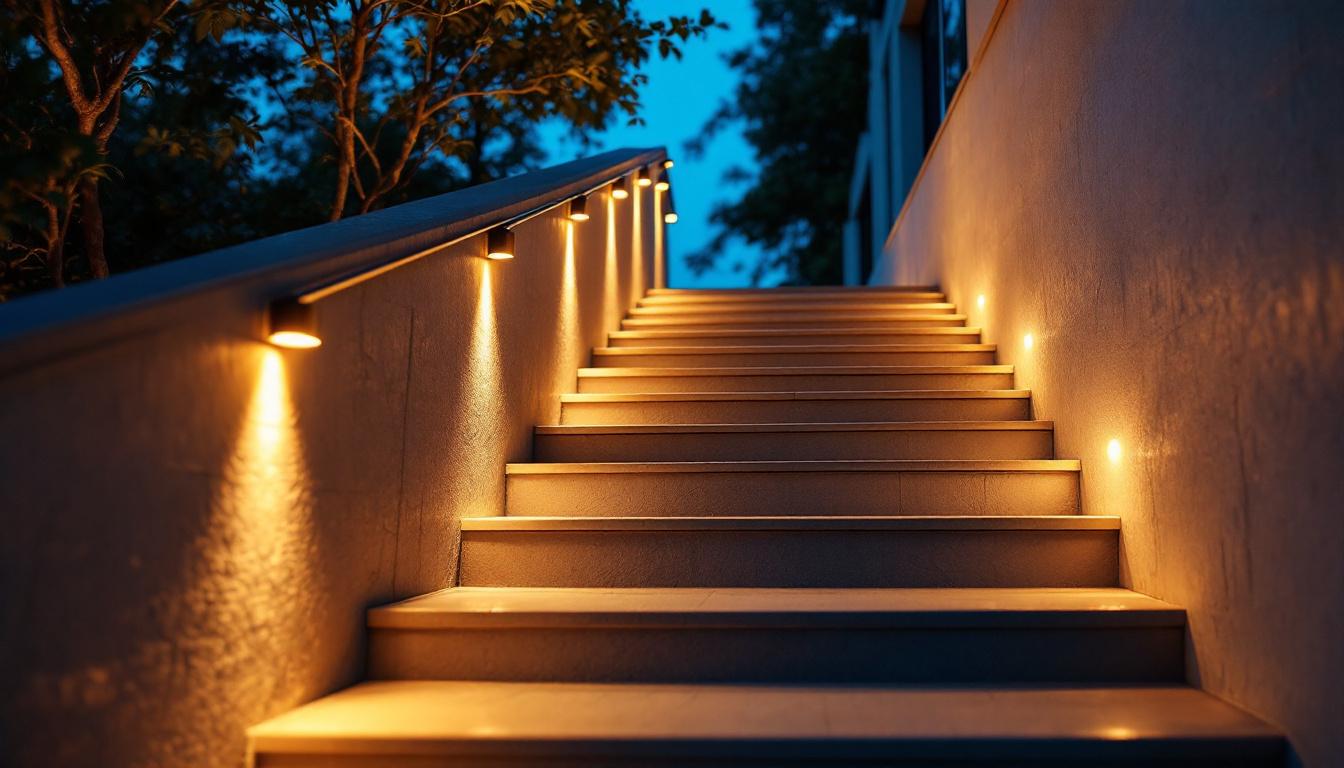
Stairwells are often overlooked when it comes to lighting design, yet they play a crucial role in both safety and aesthetics within a building. Proper lighting in stairwells not only enhances visibility but also contributes to the overall ambiance of the space. For lighting contractors, understanding the unique challenges and opportunities presented by stairwell lighting is essential for delivering effective solutions.
In many cases, stairwells serve as transitional spaces that connect different levels of a building. This means that the lighting must be functional, guiding occupants safely while also complementing the architectural design. The right lighting can transform a stark, utilitarian stairwell into an inviting passageway, making it a vital consideration for contractors aiming to provide comprehensive lighting solutions.
One of the primary reasons for investing in quality stairwell lighting is safety. Poorly lit stairwells can lead to accidents, particularly in high-traffic areas. A well-lit stairwell reduces the risk of slips and falls, ensuring that occupants can navigate the space confidently. Lighting contractors must consider various factors, such as the intensity of the light, the placement of fixtures, and the color temperature, to create a safe environment.
Moreover, incorporating features like motion sensors can enhance safety further. These sensors can automatically activate lights when someone enters the stairwell, ensuring that the area is always well-lit when needed. This not only improves safety but also contributes to energy efficiency by reducing unnecessary lighting when the stairwell is unoccupied.
While safety is paramount, the aesthetic appeal of stairwell lighting should not be underestimated. A well-designed lighting scheme can highlight architectural features, create visual interest, and establish a mood that aligns with the overall design of the building. For contractors, this means selecting fixtures that not only provide adequate illumination but also enhance the visual narrative of the space.
Using a combination of ambient, task, and accent lighting can create a layered effect that adds depth and character to the stairwell. For instance, wall sconces can provide soft, ambient light while recessed lighting can illuminate the steps, ensuring that the space is both functional and visually appealing.
When it comes to stairwell lighting, there are several types of solutions that contractors can consider. Each type offers unique benefits and can be tailored to meet the specific needs of the space.
LED lighting has become increasingly popular in stairwell applications due to its energy efficiency and long lifespan. LED fixtures consume significantly less energy than traditional incandescent or fluorescent lights, making them an environmentally friendly choice. Additionally, they are available in a wide range of color temperatures, allowing contractors to customize the lighting to achieve the desired ambiance.
Furthermore, LED lights emit less heat, reducing the risk of overheating in enclosed stairwells. This is particularly important in multi-story buildings where temperature regulation can be a concern. By choosing LED lighting, contractors can provide a sustainable solution that enhances both safety and comfort.
Smart lighting systems represent a significant advancement in stairwell lighting technology. These systems allow for remote control and automation, enabling contractors to create dynamic lighting scenarios that adapt to the needs of the space. For example, lights can be programmed to dim during off-peak hours and brighten when motion is detected.
Moreover, smart lighting can integrate with other building systems, such as security and occupancy sensors, to create a comprehensive approach to building management. This not only enhances safety but also contributes to energy savings, making it an attractive option for modern buildings.
Designing an effective lighting scheme for stairwells requires careful consideration of various factors. From fixture placement to light intensity, each element plays a critical role in achieving the desired outcome.
The placement of lighting fixtures is crucial in ensuring that the stairwell is adequately illuminated. Fixtures should be positioned to eliminate shadows and provide even lighting across the entire space. This often involves placing lights at strategic intervals along the stairwell, as well as at landings and turns.
In addition to functional placement, aesthetic considerations should also be taken into account. Fixtures can be used to highlight architectural features or create focal points within the stairwell. For instance, pendant lights can add a touch of elegance, while wall-mounted fixtures can provide a more understated look.
Choosing the right light intensity and color temperature is essential for creating a welcoming and safe environment. Bright, white light can enhance visibility, making it easier for occupants to navigate the stairs. However, overly bright lighting can create glare, which may be uncomfortable for some users.
Color temperature also plays a significant role in the overall atmosphere of the stairwell. Warmer tones can create a cozy and inviting feel, while cooler tones can lend a more modern and energetic vibe. Contractors should consider the overall design of the building and the intended use of the stairwell when selecting these parameters.
In today’s environmentally conscious world, energy efficiency is a key consideration for lighting contractors. Implementing sustainable lighting solutions not only benefits the environment but can also lead to significant cost savings for building owners.
Utilizing energy-efficient technologies, such as LED lighting and smart controls, can drastically reduce energy consumption in stairwells. These technologies not only lower electricity bills but also contribute to a building’s overall sustainability profile. Contractors should be well-versed in the latest energy-efficient options to provide clients with the best solutions.
Additionally, incorporating natural light into stairwell designs can further enhance energy efficiency. Skylights or large windows can allow daylight to illuminate the space, reducing the need for artificial lighting during the day. This approach not only saves energy but also creates a more pleasant environment for occupants.
Lighting contractors must also be aware of local building codes and regulations regarding energy efficiency. Many jurisdictions have specific requirements for lighting in public spaces, including stairwells. Ensuring compliance with these regulations is essential for avoiding potential fines and ensuring the safety of occupants.
By staying informed about the latest regulations and best practices, contractors can provide clients with solutions that meet both safety and sustainability standards, ultimately enhancing the value of their services.
Examining successful stairwell lighting projects can provide valuable insights for contractors looking to improve their own designs. These case studies often highlight innovative approaches and creative solutions that can inspire new ideas.
In a recent commercial building project, a lighting contractor implemented a combination of LED fixtures and smart lighting controls in the stairwells. The result was a highly efficient lighting system that not only met safety standards but also enhanced the building’s aesthetic appeal. By using motion sensors, the lights automatically adjusted based on occupancy, significantly reducing energy consumption during off-peak hours.
This project not only improved safety and comfort for occupants but also garnered positive feedback from building management, who appreciated the reduced energy costs and enhanced functionality of the stairwell lighting.
In a residential setting, a contractor focused on creating a warm and inviting atmosphere in the stairwell of a multi-family building. By selecting warm LED lights and strategically placing wall sconces, the contractor was able to create a cozy environment that encouraged residents to use the stairwell instead of elevators.
The project highlighted the importance of considering the needs and preferences of the building’s occupants. The positive feedback from residents underscored the impact of thoughtful lighting design on the overall living experience.
The field of lighting design is constantly evolving, with new technologies and trends emerging regularly. Staying ahead of these trends is essential for lighting contractors looking to remain competitive in the industry.
The integration of Internet of Things (IoT) technology into lighting systems is one of the most significant trends shaping the future of stairwell lighting. IoT-enabled lighting can provide real-time data on energy usage, occupancy patterns, and even maintenance needs. This information allows contractors to optimize lighting systems for maximum efficiency and performance.
Furthermore, IoT technology can enhance user experience by allowing occupants to control lighting through mobile apps or voice commands. This level of customization can significantly improve the usability and functionality of stairwell lighting, making it a valuable consideration for modern projects.
Another emerging trend is the focus on human-centric lighting, which prioritizes the well-being of occupants. This approach considers how light affects mood, productivity, and overall health. In stairwell lighting, this could involve using tunable white light that adjusts throughout the day to mimic natural daylight patterns.
By incorporating human-centric principles into stairwell lighting design, contractors can create spaces that not only meet safety and aesthetic needs but also enhance the overall well-being of occupants.
Lighting in stairwells is a critical aspect of building design that demands careful consideration from contractors. By understanding the importance of safety, aesthetics, energy efficiency, and emerging trends, lighting contractors can deliver innovative solutions that enhance the functionality and appeal of stairwells.
As the industry continues to evolve, staying informed about new technologies and design principles will be essential for contractors looking to provide the best possible lighting solutions. By embracing these approaches, lighting contractors can ensure that their stairwell designs not only meet the needs of clients but also contribute to a safer and more enjoyable environment for all occupants.
Ready to elevate your stairwell lighting designs with the finest products on the market? Look no further than LumenWholesale. We provide contractors with exceptional, spec-grade lighting solutions at prices that can’t be beaten. Our commitment to quality and affordability ensures that you can light up any stairwell with confidence, knowing you’ve sourced your products from a trusted wholesale provider. Plus, with the convenience of free shipping on bulk orders, you can enjoy premium lighting without the premium price tag. Don’t let hidden fees dim your project’s potential. Wholesale Lighting at the Best Value is just a click away—transform your stairwell lighting approach with LumenWholesale today.

Discover how the LED Can Light Kit is revolutionizing the lighting industry with energy efficiency, easy installation, and cost savings—transform your space today!.

Discover the evolution of artificial light and its impact on modern businesses.

Explore the surprising truth about solar lights and their need for direct sunlight.

Discover the importance of outdoor LED lights for stairs and how lighting contractors can enhance safety, aesthetics, and energy efficiency—boost your projects today!.